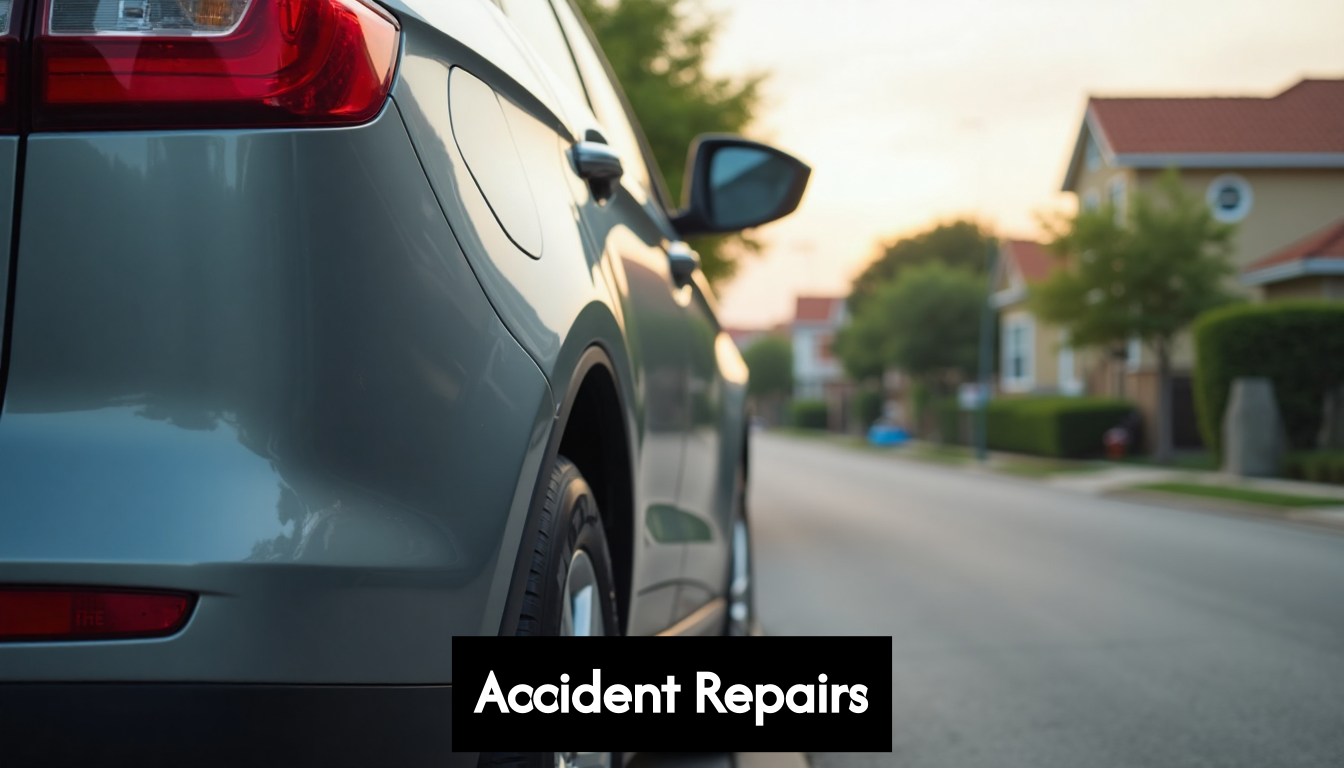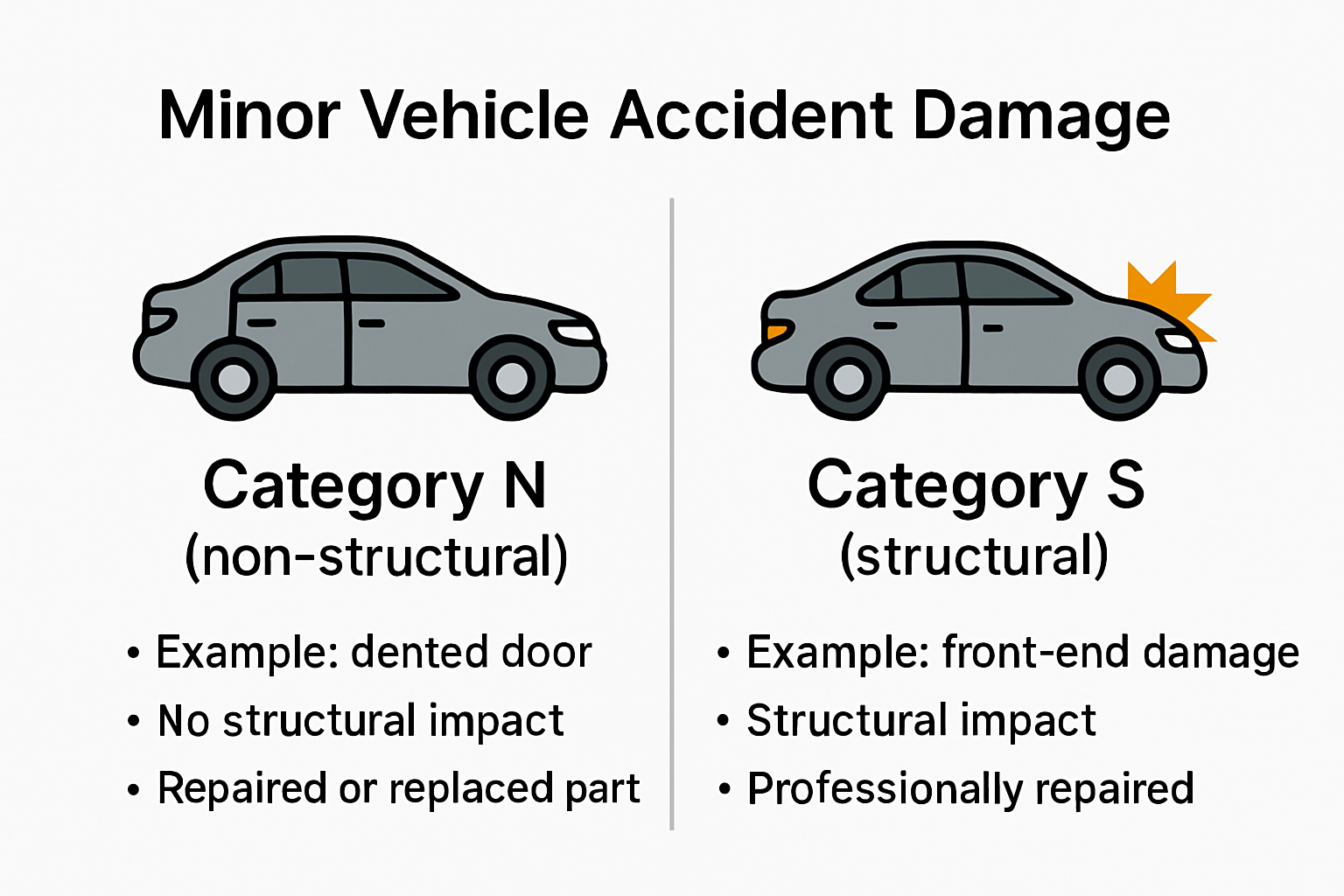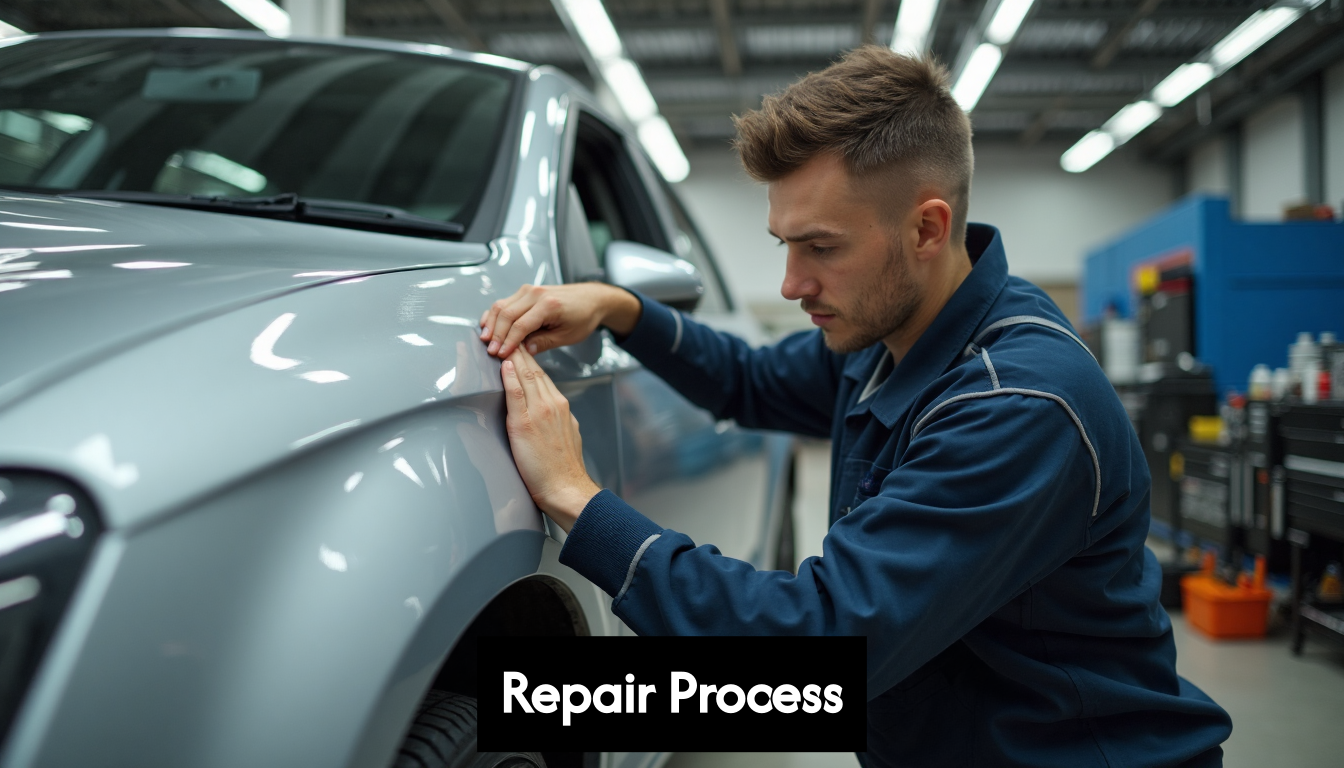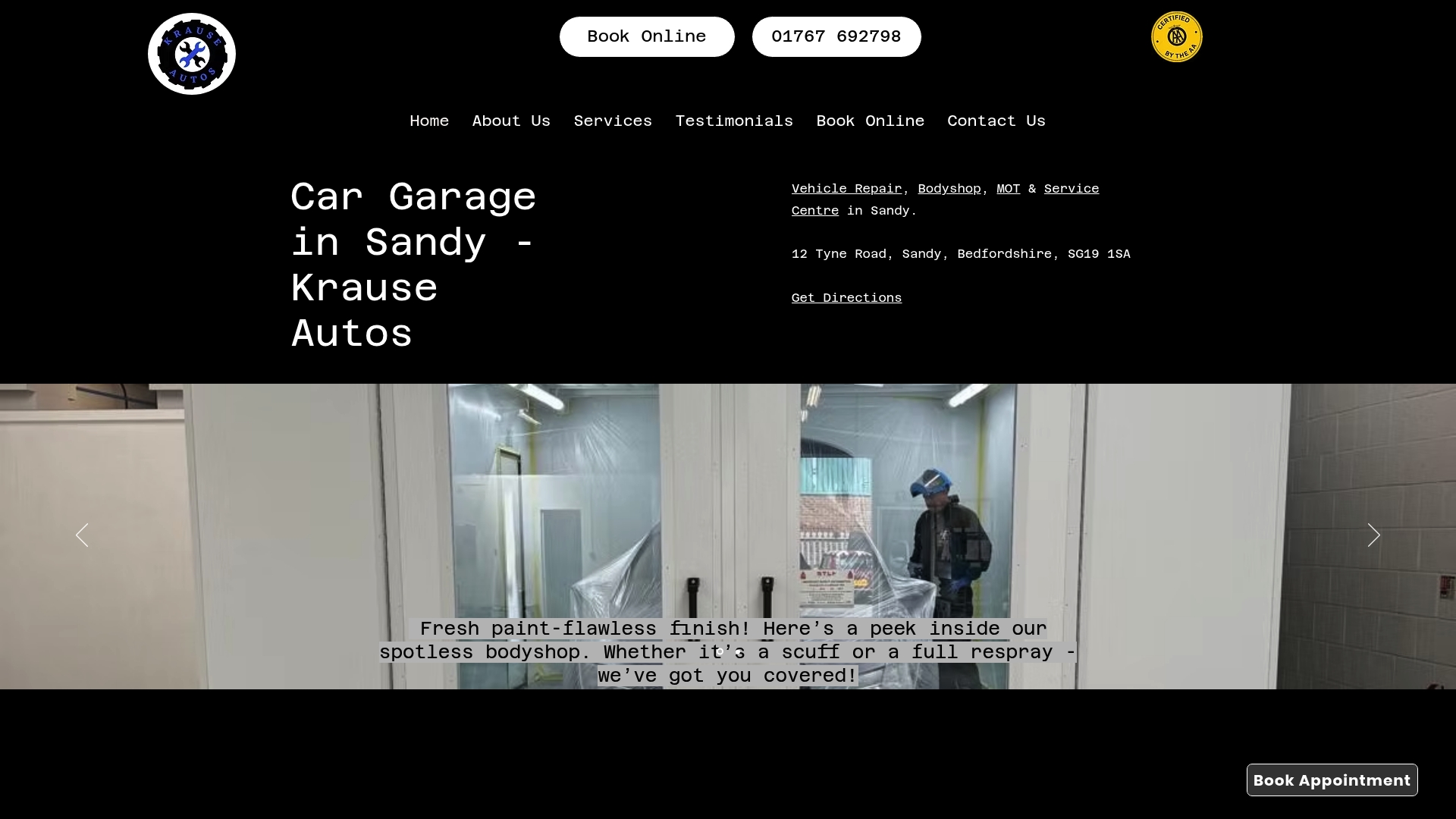Minor Accident Repairs Guide 2025: Essential Steps for Every Driver
- coledem
- Jun 24
- 6 min read
Minor accidents happen to nearly every driver, but knowing what counts as minor damage and how to handle it is key. Most drivers are surprised to learn that over 60 percent of minor dings and scrapes in the UK fall under non-structural Category N damage and can often be fixed without a costly trip to the body shop. Yet many small bumps hide issues that slip past untrained eyes, and what looks simple could lead to expensive repairs later. The steps you take in the minutes after a scrape make all the difference.
Table of Contents
Quick Summary
Understanding Minor Accident Damage Types
Drivers encounter various types of minor accident damage that can impact their vehicle’s appearance and performance. Understanding these damage categories helps motorists make informed decisions about repairs and insurance claims.
Categories of Minor Vehicle Damage
Minor accident damage typically falls into two primary classifications according to UK insurance standards. Learn more about vehicle damage categories to better understand the nuanced world of automotive repairs.
Category N damages represent non-structural issues that do not compromise the vehicle’s fundamental safety systems. These often include:
- Cosmetic Scratches
: Surface-level paint damage that does not penetrate deeper metal layers
- Small Dents
: Minor impacts that create surface deformations without structural compromise
- Trim Damage
: Broken or cracked exterior plastic components
Category S damages involve structural components that require professional assessment and potential realignment. These might include:
- Panel Misalignment
: Subtle shifts in body panels affecting overall vehicle geometry

Assessment and Repair Strategies
Professional mechanics use advanced diagnostic tools to evaluate the extent and potential consequences of minor accident damage. According to government road casualty statistics, most minor damages can be effectively repaired without compromising vehicle safety.
Key considerations during damage assessment include:
Precise measurement of panel distortions
Evaluation of underlying structural integrity
Potential impact on vehicle performance and safety systems
Understanding the nuanced nature of minor accident damage empowers drivers to make informed decisions. While some damages might seem superficial, professional inspection ensures comprehensive vehicle protection and maintains long-term value.
Drivers should always consult qualified automotive professionals who can provide detailed assessments and recommend appropriate repair strategies tailored to specific damage types and vehicle models.
Step-by-Step Repair Process for Small Bumps
Small bumps and minor vehicle damage require a systematic approach to ensure effective repair and maintain your vehicle’s aesthetic and structural integrity. Discover expert bodywork repair techniques to address these common automotive challenges.
Initial Damage Assessment
Before beginning any repair process, thorough damage evaluation is crucial. According to road safety experts, the first steps after a minor bump involve a comprehensive inspection. Drivers should carefully examine the affected area, checking for:
- Surface Scratches
: Shallow paint damage that may require polishing
- Dent Depth
: Determining whether the damage is superficial or requires professional intervention
- Paint Integrity
: Assessing whether the impact has compromised the vehicle’s protective coating

Paintless Dent Removal Techniques
For minor dents, Paintless Dent Removal (PDR) offers an innovative and cost-effective solution. As automotive repair specialists explain, this technique involves:
Carefully massaging the dented metal from behind the panel
Using specialized tools to gradually reshape the damaged area
Preserving the original paint finish
Avoiding extensive and expensive traditional bodywork repairs
Professional Repair Considerations
While some minor bumps can be addressed through DIY methods, professional assessment remains critical. Small impacts can potentially cause underlying structural issues that are not immediately visible. Drivers should consider professional repair when:
Dents exceed 5 centimetres in diameter
Paint has been significantly damaged or broken
There are signs of potential structural misalignment
The vehicle’s safety systems might be compromised
Prompt attention to minor bumps prevents long-term damage. Untreated impacts can lead to rust formation, paint deterioration, and potentially more expensive repairs down the line. Professional mechanics use advanced diagnostic tools to ensure comprehensive damage assessment and precise repair strategies.
Remember that each vehicle and bump is unique. What might seem like a minor issue could have more significant implications. Always consult with qualified automotive professionals who can provide tailored advice and ensure your vehicle remains in optimal condition.
When to DIY or Visit a Garage
Navigating the decision between do-it-yourself repairs and professional garage services can be challenging for drivers facing minor accident damage. Learn more about professional bodywork assessment to make informed decisions about your vehicle’s repair needs.
DIY Repair Capabilities
Some minor accident damages are suitable for home repairs, offering cost-effective solutions for budget-conscious drivers. According to automotive repair specialists, DIY repairs are typically appropriate for:

- Surface Scratches
: Minor paint blemishes that can be addressed with polishing compounds
- Small Dents
: Shallow surface deformations using paintless dent removal techniques
- Trim Repairs
: Reattaching or replacing simple plastic components
- Minor Paint Touch-ups
: Small chips or scratches using matching touch-up paint
Critical Signs You Need Professional Intervention
Certain damage types require immediate professional attention. Experienced mechanics highlight several red flags that indicate a garage visit is essential:
Structural damage affecting vehicle alignment
Dents larger than 5 centimetres in diameter
Paint damage exposing underlying metal
Potential compromise to safety systems
Signs of underlying rust or corrosion
Professional Assessment Benefits
Professional garages offer comprehensive damage evaluation that goes beyond surface-level repairs. As vehicle maintenance experts explain, professional assessment provides critical advantages:
Advanced diagnostic tools for precise damage identification
Comprehensive structural integrity checks
Preservation of vehicle warranty
Prevention of long-term damage
Expert recommendations for cost-effective repair strategies
Drivers should remember that seemingly minor damages can potentially lead to significant issues if not properly addressed. While DIY repairs might save money in the short term, professional inspection ensures comprehensive protection of your vehicle’s value and safety.
Trust your instincts and seek professional advice when you are uncertain. A quick consultation with a qualified mechanic can prevent minor issues from escalating into costly repairs. Professional garages like Krause Autos offer expert guidance, ensuring your vehicle receives the most appropriate and effective treatment for any accident damage.
Preventative Tips to Reduce Future Repairs
Preventing minor accident damage requires proactive strategies and mindful driving techniques. Explore advanced vehicle protection strategies to safeguard your vehicle from potential repairs.
Vehicle Maintenance Fundamentals

Regular vehicle maintenance is the cornerstone of preventing minor accident damage. According to motor maintenance experts, comprehensive vehicle care involves:
- Routine Inspections
: Quarterly professional vehicle assessments
- Tyre Pressure Checks
: Monthly monitoring and adjustment
- Brake System Evaluation
: Bi-annual comprehensive examinations
- Alignment Verification
: Annual suspension and steering geometry checks
Advanced Driving Safety Techniques
Drivers can significantly reduce accident risks through strategic driving approaches. Vehicle safety specialists recommend implementing:
Maintaining safe following distances
Anticipating potential road hazards
Using advanced driver-assistance systems (ADAS)
Practicing defensive driving techniques
Avoiding distractions while operating the vehicle
Technology and Proactive Protection
Modern automotive technologies offer unprecedented opportunities for accident prevention. As industry analysts highlight, emerging technologies provide critical protective mechanisms:
Adaptive cruise control systems
Automatic emergency braking
Lane departure warnings
Parking sensors and 360-degree cameras
Collision prediction algorithms
Investing in these preventative measures not only reduces the likelihood of minor accidents but also potentially lowers long-term repair costs. Drivers who adopt a proactive approach to vehicle maintenance and safety can significantly minimise the risk of unexpected bodywork damage.
Remember that prevention is always more cost-effective than repair. By combining regular maintenance, advanced driving techniques, and leveraging modern vehicle technologies, drivers can create a comprehensive strategy for protecting their vehicle from potential minor accident damage.
Ultimately, your vehicle’s longevity and performance depend on your commitment to consistent care and thoughtful driving practices.
Frequently Asked Questions
What is considered minor accident damage?
Minor accident damage includes non-structural issues such as cosmetic scratches, small dents, and trim damage that do not compromise the vehicle’s fundamental safety systems.
How can I assess minor accident damage?
To assess minor accident damage, carefully examine the affected area for surface scratches, dent depth, and paint integrity. It’s important to check for underlying structural concerns that may not be immediately visible.
When should I consider professional repairs for minor accidents?
You should consider professional repairs when dents exceed 5 cm in diameter, there is significant paint damage, or if there are signs of structural misalignment that could affect vehicle safety.
What are effective DIY methods for repairing minor dents and scratches?
Effective DIY methods include using polishing compounds for surface scratches, applying paintless dent removal techniques for small dents, and conducting minor paint touch-ups with matching paint.
Get Expert Help for Minor Accident Damage in Bedfordshire
Noticed a ding, scratch or bumper scuff and feeling unsure if it needs professional care? The steps you take after a minor mishap can make all the difference to your car’s safety, value and long-term repair costs. Many repairs look simple on the surface but, as highlighted in our guide, unseen issues can easily slip by. Addressing Category N damage, small dents and cosmetic scratches properly is vital for drivers who want to keep their vehicles roadworthy and looking smart.
Take the hassle out of minor accident repairs by choosing Krause Autos. Our dedicated bodywork centre in Sandy specialises in exactly these issues, blending advanced diagnostics with honest advice. Book your expert assessment today for peace of mind and a full explanation of all your options. Visit Krause Autos now to secure your vehicle’s appearance and safety before that small problem becomes a costly fix.






Comments